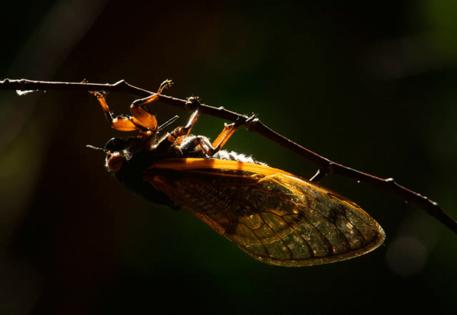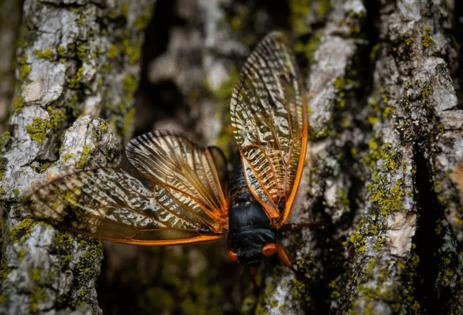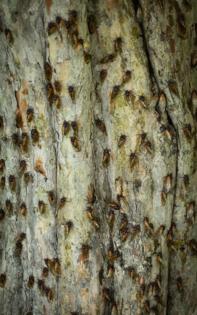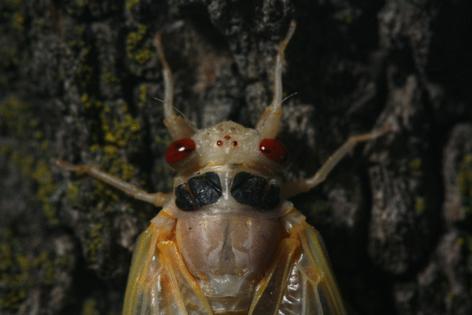Illinois will soon be cicada central when 2 broods converge on state in historic emergence
Published in Lifestyles
When his youngest daughter was born early in the summer of 2004 in Washington, D.C., John Lill and his wife could hear cicadas singing from inside the hospital.
“That’s how loud it was,” he said. “So my daughter, who was just an infant at the time, didn’t get to experience it. She missed it. She was just a baby. But 17 years later, her crazy parents had to drag her out, and she got to see all of it.”
Lill’s family history has been marked by these noisy insects. His wife was born in a year of a big cicada emergence, so she is a “cicada baby,” too. A biology professor at George Washington University, Lill has dedicated decades of research to these creatures, sharing his fascination both at work and at home. In a few months, he plans to visit Illinois to experience and study a historical cicada event that is only happening here.
This summer, millions of periodical cicadas will emerge simultaneously across the United States. They belong to Brood XIX, four species that appear every 13 years in the Southeast, and Brood XIII, three species that appear every 17 years in northern Illinois.
“The confluence of space and time is happening in the state of Illinois in particular,” Lill said. “Any single spot in the entire state will have cicadas, as far as I can tell from the maps … (in) the suburbs and the cities, any place there’s trees.”
It will be the first time in 221 years that these two specific broods come above ground at the same time and in such proximity. The last time this happened was in 1803 when Thomas Jefferson was president, and Illinois had yet to become a state. The broods will not necessarily overlap but emerge adjacent to each other in the Springfield and Urbana-Champaign metropolitan areas.
Periodical cicadas exist in only two other countries: One species emerges in the islands of Fiji every eight years, and another one — the “World Cup cicada” — emerges every four years in northeast India, coinciding with the international soccer tournament.
In the United States, there are 15 broods of periodical cicadas, each of which dig their way out from underground on different 13-year or 17-year cycles. Other broods have emerged at the same time in the past decade but not in the same place. Experts consider this year unusual because two broods are co-emerging in neighboring areas in Illinois for the first time in more than two centuries.
“This contact area will see all seven species at once,” said Martha Weiss, a professor of biology at Georgetown University who researches cicadas with Lill. “So evolutionary biologists are going to be very interested to be at this zone of contact because that happens very rarely.”
Despite their clockwork cycles, an added unknown for this year’s double emergence is exactly when it will occur. Generally, cicadas come out in Illinois in late May or early June, but the unusually warm winter could push those dates forward.
...continued
©2024 Chicago Tribune. Visit at chicagotribune.com. Distributed by Tribune Content Agency, LLC.














Comments